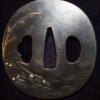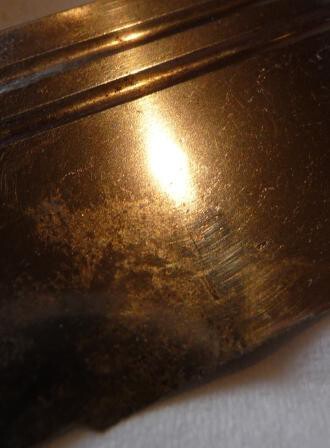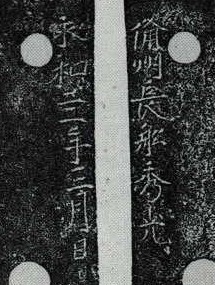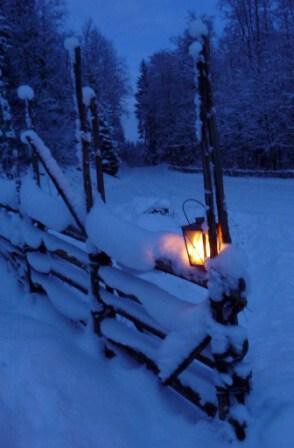-
Posts
497 -
Joined
-
Last visited
-
Days Won
1
Everything posted by Veli
-
I apologize, this is not a very good photo. It is not the lighting that does the trick, but automatic exposure parameters selected by the camera based on some alien logic BR, Veli
-
Yes, that is it! For reference, here's the boshi from the opposite side, where it is without faults... BR, Veli
-
-
Some time ago I purchased a Mino Kanefusa tanto from an antique dealer not specialized to nihon-to. Risky business, but I had been looking for this kind of tanto. After the tanto arrived I was facing several problems: a weak spot in the yakiba (on the verge of being nioi-giri); something near the top of the habaki that might be a hagiri; and a habaki that was totally stuck. I soon realised that any conventional means of detaching the habaki would lead to complete destruction of the nice gold-foiled habaki. Thus I deviced the following procedure: 1) I oiled the blade and the habaki thoroughly 2) I wrapped the habaki and blade tightly in thin plastic membrane (shrink foil) 3) I applied a thin layer of epoxy on the upper part of the habaki, and 3 mm up the blade. 4) After the epoxy hardened I wound a reinforcing coil of copper wire around the upper part of the habaki 5) I applied a second epoxy layer on the copper wire coil. Now I had a reinforced epoxy mold that would distribute any impacts evenly on the surface of the habaki and also prevent the habaki from buckling 6) In a block of wood, I chiselled a groove that perfectly fitted the nakago. Then I screwed another wood block onto its side, and thus I had a support for the nakago. 7) I sawed a slot with the blade's cross-section in another piece of wood. This piece was used as a tool when tapping the habaki off. Finally I administered a few increasingly sharp blows (hard enough to destroy an unsupported habaki) with a wooden hammer, using the slotted piece in between the habaki mold and hammer. And finally, the habaki was off, with no damage. The mold was easy to remove after the habaki was detached (see picture) The blade under the habaki was badly rusted. Probably the habaki has not been removed in decades It seems that there was no hagiri after all; the fracture-like patterns were on the one side only, and they seem to be related to the fact that proper blade care was prevented by the habaki So, before anybody uses my method, please comment on the risks of removing habaki this way. It worked perfecly this time... Another question, what do you think of the nioi giri? Fatal? BR, Veli
-
-
Compared to the signature example supplied by Franco, there are differences. Fujishiro example is 1st gen, however. I leave further discussion to experts... BR, Veli
-
Hi! Please take good care of this one! My quick translation: Bishu Osafune Hidemitsu Eiwa ni nen hachi gatsu hi (August 1376) This is a Bizen Kozori group tanto from late Nanbokucho! The smith's name was Hidemitsu. He was the second generation Hidemitsu. He is rated a high-level smith! I am not sure about the authenticity of the signature, but I compared it to a reference I have (Toko Taikan p. 523), and found no significant differences. The oshigata is not very clear in the said book, however. Furthermore, the engravings on the blade look skillfully made, which is a good thing! More knowledgeable members hopefully verify my analysis... In any case, this is a very interesting and possibly a valuable tanto! BR, Veli
-
Hi! You are correct, shinogi-zukuri wakizashi did not appear until muromachi period. Older blades of the said type do exist, but they are usually tachi that have been cut-down later. Now if you consider the possibility of your blade being a cut-down Awataguchi tachi, you have to ask yourself, whether the sugata resembles the uppermost 2/3 of a Yamashiro tachi. Furthermore, Awataguchi blades are characterized by extremely high level of workmanship, like in this example: http://www.nihonto.us/Awataguchi%20Kuniyasu.htm I personally do not find a great resemblance... Sugata, hada, hamon... all look different BR, Veli
-
-
Hard to see. If it is Kaneaki, it must be 兼杲. BR, Veli
-
Hi! The blade seems to have been "polished" by unorthodox means (fine sandpaper?), so you should be prepared to pay the cost for polishing (1 kUSD). Furthermore, you should accept the usual risk that hidden faults may be found during the polishing process. The hamon is quite narrow already... Papered and polished blades are always the safest - and usually the cheapest. BR, Veli
-

NTHK-NPO 2011 UK Shinsa
Veli replied to pcfarrar's topic in Sword Shows, Events, Community News and Legislation Issues
A shinsa in the UK is as close as it gets... I would be willing to take a vacation, fly over and submit two or three blades. BR, Veli -
Paul has an interesting point here! But isn't the ken horimono located where the naginata-hi usually should be? So the blade might have had it originally? If the hamachi has been moved up in the modification, shouldn't it look like this? BR, Veli
-
What a beauty You have in there! I have always been a great fan of naginata naoshi and u-no-kubi zukuri blades (I presently own only one u-no-kubi zukuri blade). They are kind of harmonious sculptures in steel... I guess a number of people think the same way, since I have noticed that mid- and low price range naginata naoshi blades seem to sell more quickly than hira-zukuri or shinogi-zukuri blades. Of course they are more rare, but I think it is also their aesthetics! And, as you say, the high-level workmanship in your blade is obvious! BR, Veli
-
Hello All! One of the auction items is an O-suriage Sue-Soshu katana attributed to Tsunahiro (probably sandai), with a cutting test inscription. The estimated price is at the low end of the auction range, and Christie's has not bothered to supply a picture. If any of the NMB members in the UK has visited the display and actually seen the blade, I would be interested to know if there's any condition issues... BR, Veli
-
Oh yes, now I see! Thank You very much, Moriyama-san! BR, Veli
-
Hi All! I am not collecting showa-to, but a friend of mine has a couple of guntos which I had the opportunity to see recently. The owner did not know too much of the blades, so I tried to help him to find out the smiths/factories. The first gunto was in a very good condition; The nakago also had a seki stamp. It had a clear (oil quenched) midare hamon, and - naturally- muji hada. The mei seemed straightforward to read: Fukuda Sukemitsu. The second one was out of polish. The hamon was barely visible. The kissaki lacked yokote. The inscription was a long one, but luckily the owner had a romanization of the inscription: Jin mu fu satsu Taka yama to ro no den Tami fusa Saku. I agree with this romanization, except that I think the smith is Ujifusa, not Tamifusa. The phrase "Jinmu fusatsu" has been recently discussed on the NMB, so that is the clear part, as well as "Takayama to". But I totally fail to understand the meaning of the 8th to 10th kanji: 老 乃 田 ( ro no den (or oi no ta)) Old man's ricefield??? I'd be thankful if somebody has the time to educate an unexperienced member like myself! BR, Veli
-
Gentlemen, I apologize for my elementary mistake; 尾州 = Bishu as Owari, Tokaido 備州 = Bishu as Bizen, Sanyodo Thank You for helping! Where would I be without this forum... (answer: on my porch, enjoying sunshine and drinking beer instead of sitting inside learning kanji :lol: ) BR, Veli
-
Now that you said it, the first two kanji indeed look like "Bishu"! But isn't the nakago shape atypical for a Bizen blade? BR, Veli
-
I guess the buyer primarily wanted the fittings? Does anybody know if this is the normal market price level for this kind of naval dirk? Of course I am no expert, but I do not see why anybody should pay that much for the blade. BR, Veli
-
Hi! This is my favourite article (which has been discussed in past threads in NMB): Technology for Digitalizing Pictorial Data of Japanese Swords Akira Ide, Kazuya Manabe, Hirokazu Shimizu, Masahirio Sugawa Proceedings of the 38th Hawaii International Conference on System Sciences - 2005 Copypaste the article name into Google, and you'll find the article in PDF form for free. BR, Veli
-
Another "Muramasa" for sale; The usual explanation: because the Nakago is in bad shape and the mei is unclear, it is a Muramasa with removed Mei. http://cgi.ebay.ca/Huge-WWII-Japanese-N ... 0415662889 The blade looks somewhat tired and is in bad polish. It has muneyaki, but I cannot identify it to any major school. Wakimono? BR, Veli
-
Hi Eric! Nice work! Somehow, the forms created by nature have a delicate beauty in them. There's a kabuto katanakake for sale in Ebay. Looks nice, but the antlers are made of cast bronze. Horn is a relatively safe material in terms of abrasion, But I'd be afraid to rest a saya on a rough bronze surface without a cushioning, and I'd never rest a bare blade on these metal antlers. http://cgi.ebay.com/Japanese-SAMURAI-Kabuto-Helmet-Katana-Sword-Kake-Rack_W0QQitemZ400060637652QQcmdZViewItemQQptZAsian_Antiques?hash=item5d2578e1d4&_trksid=p3286.c0.m14&_trkparms=65:12|66:2|39:1|72:1205|293:2|294:50 BR, Veli
-

What is the Best Oil for Japanese Swords??
Veli replied to Dino's topic in General Nihonto Related Discussion
I did not mean to recommend gun oils in general. The term "gun oil" does not guarantee anything. Nor does "machine oil" or "Choji oil". One should only use oils that are from known, old, well-reputed manufacturers or suppliers. I like to use high-quality gun oil (Beretta oil in my case), because it does not have impurities that could induce stress-corrosion cracking. BR, Veli -

What is the Best Oil for Japanese Swords??
Veli replied to Dino's topic in General Nihonto Related Discussion
Hi all! I stopped using choji oil for the following reasons: - Organic oil oxidizes and gets sticky. - Choji oil does not form a uniform film; it stays in the form of microscopic hemispheres, and thus visually obscures the jihada and even hamon. With synthetic oil you do not necessarily need to remove oil every time you want to look at the blade. - Because of the incomplete surface wetting, I doubt it can match the corrosion prevention ability of synthetic oils. I am currently using Beretta gun oil for oiling my blades. Gun oil has originally been designed for protecting carbon steel from corrosion; it will not harm wood, it easily gives a uniform oil film, its viscosity is low, and it is readily available. BR, Veli














